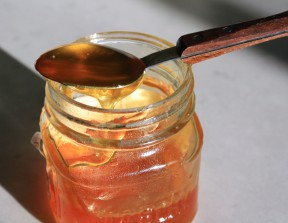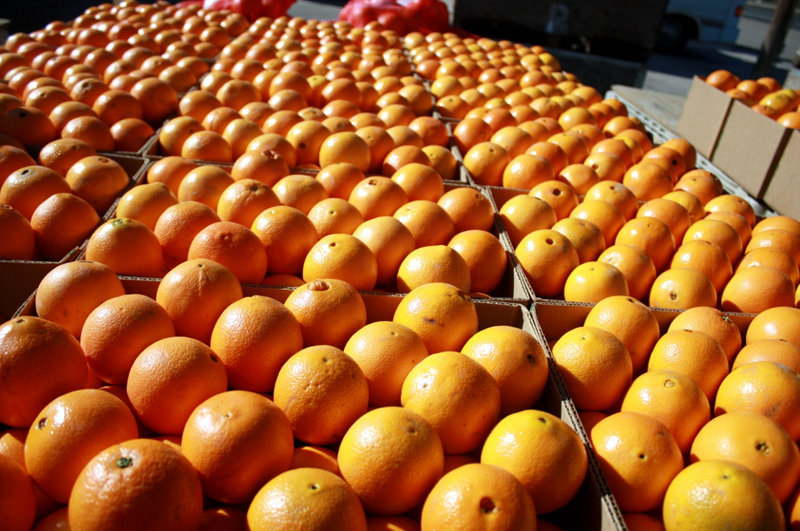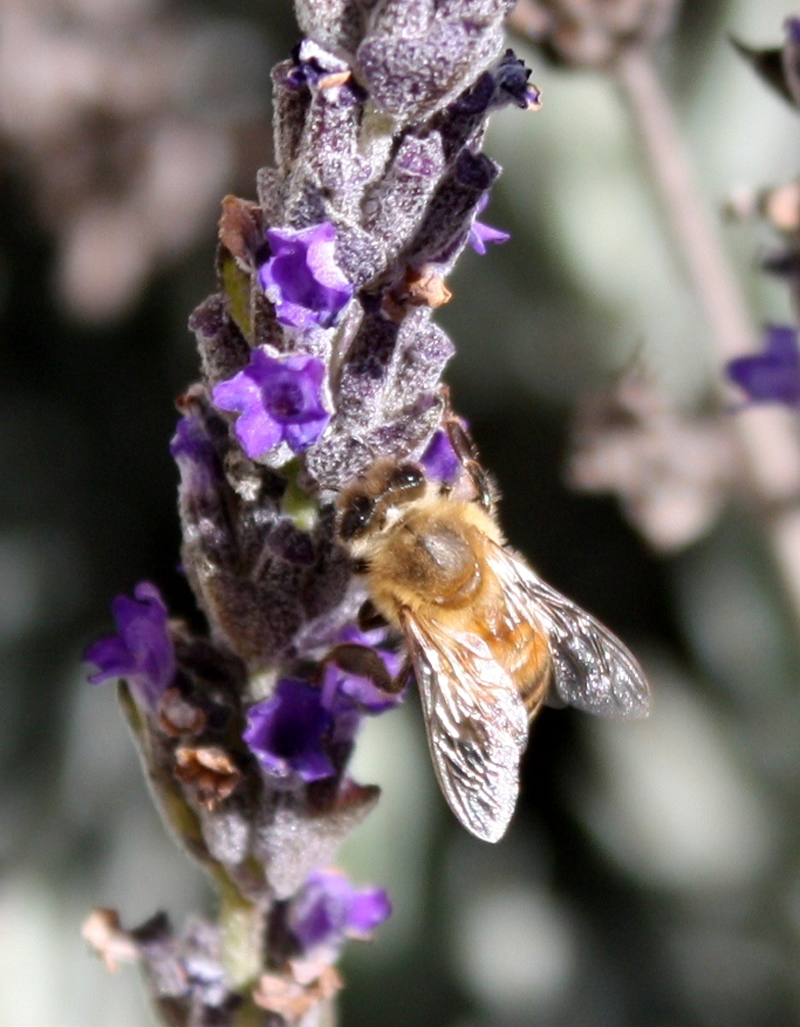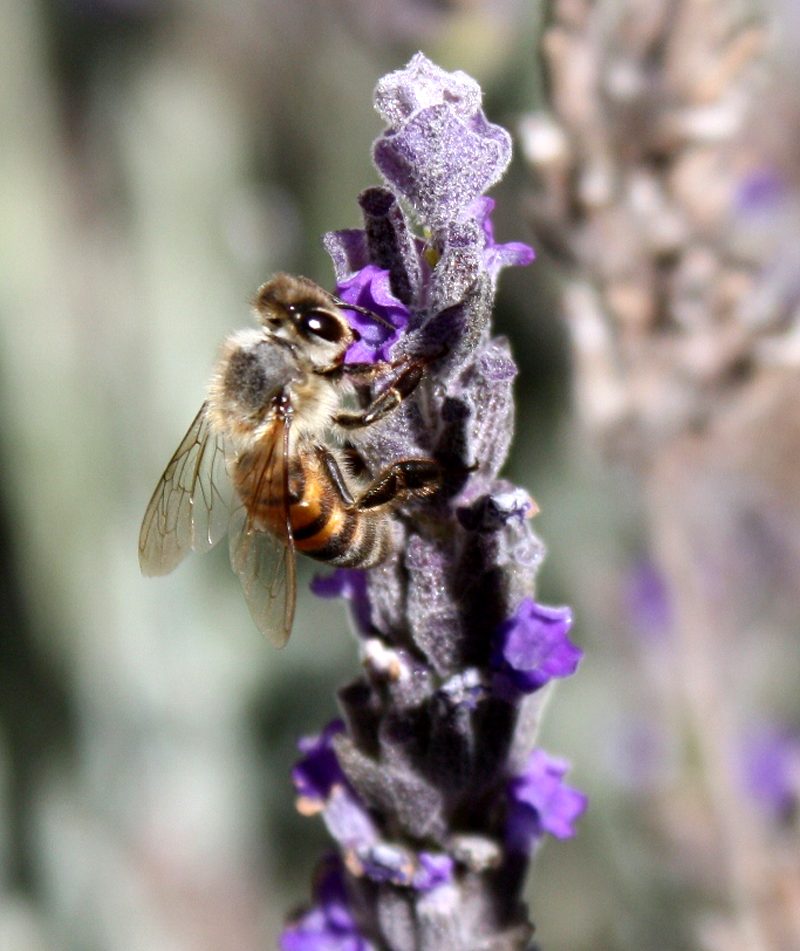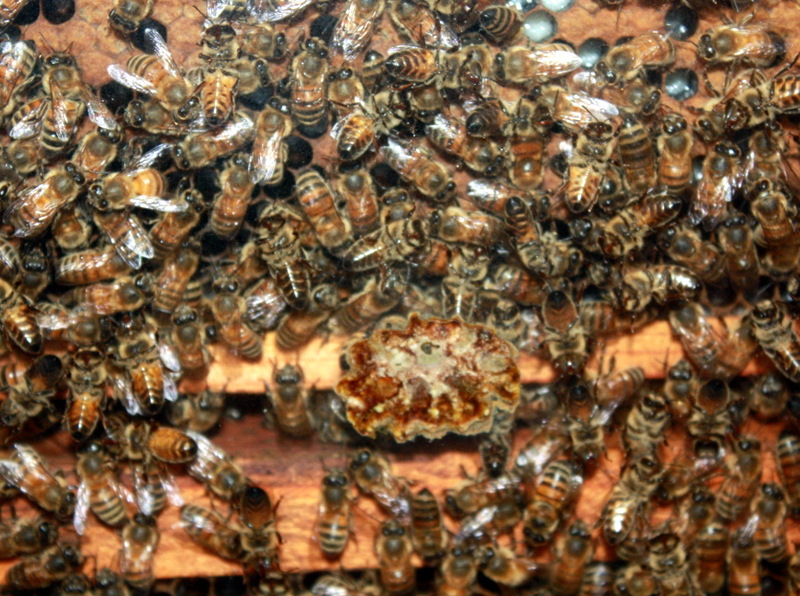 How is honey made? I know bees make it, but what do they do, exactly?
How is honey made? I know bees make it, but what do they do, exactly?
My husband popped this question while we were driving on State Route 126 next to the orange, lemon and avocado groves, and we were passing a few groups of bee hives placed in the orchards.
Beehives … honey … bees … all of this is related, but how do the bees make the honey? That answer was just not something I knew off the top of my head. Despite of my keen interest, I am not a nature expert. But my husband wanted the facts, clear and simple, and I wasn’t going to be able to escape using some vague generalities.
Thank goodness for Google. I learned a few things, so let me tell you what I found out.
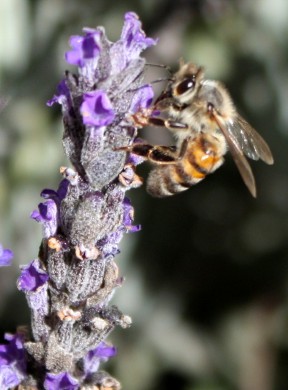 Let’s start with the worker bees. They accomplish two different tasks: collecting pollen and nectar. But interestingly, they never do both on the same trip.
Let’s start with the worker bees. They accomplish two different tasks: collecting pollen and nectar. But interestingly, they never do both on the same trip.
The pollen is that yellow or orange powder that remains on your finger after you touch a flower in bloom.
When they collect the pollen, the bees also pollinate the flowers and make it possible for them to produce fruit. The bees transfer pollen from female to male plant parts, and because of this, the crop will grow.
Without their work, those oranges would not exist. This is why you see rows of beehives along the orchard. Honey production is not the main reason those beehives are there; pollination is the main objective – but the honey is certainly an interesting product to collect after the season is over.
The beekeepers rent their beehives to the orchard owners, moving them from one site to the next – which is an interesting and challenging job, I am sure.
Workers bees collect the pollen in hairlike baskets on their hind legs. They pack pollen grains into them as they move from one flower to the next. This pollen is mixed with honey and is the main diet of the next brood of bees raised in the hive.
On another trip, the honey bees might bring nectar to the hive. This is what is used to make honey.
What is nectar? If you have pulled a honeysuckle blossom from its stem, the nectar is the liquid that forms droplets at the end of the blossom.
The bee uses her tubular tongue to suck nectar from the flower. It goes into her abdominal sac (the bee has two stomachs).
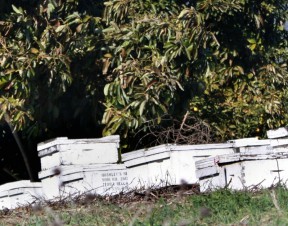 The honey bee goes to the hive and passes the nectar from mouth to mouth to other worker bees. In turn, they process the honey by chewing the nectar for 30 minutes. The enzymes break down the sugars in the nectar into simple sugar to make it more digestible for the bees and less likely to be attacked by bacteria. At this time, it is still liquid syrup, and it is spread though the honey comb.
The honey bee goes to the hive and passes the nectar from mouth to mouth to other worker bees. In turn, they process the honey by chewing the nectar for 30 minutes. The enzymes break down the sugars in the nectar into simple sugar to make it more digestible for the bees and less likely to be attacked by bacteria. At this time, it is still liquid syrup, and it is spread though the honey comb.
Then the fanning bees spring into action. They dehydrate and preserve the stored substance by flapping their wings to reduce the moisture content.
This buzzing sound is what you hear when you come close to a beehive. The honey becomes viscous after this process. The temperature inside the beehive is controlled to remain around 95 degrees. When the honey is ready, the bees seal the cell of the honeycomb with beeswax secreted from the worker’s abdomen.
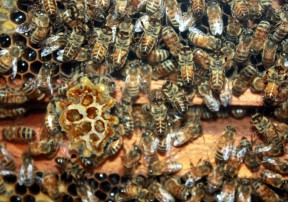 Honey is a comfort food, and there is nothing more delicious than golden, gooey honey on warm toast on a cold winter day. But the bees have to work hard to make it. It takes about 2 million flowers to make a pound of honey.
Honey is a comfort food, and there is nothing more delicious than golden, gooey honey on warm toast on a cold winter day. But the bees have to work hard to make it. It takes about 2 million flowers to make a pound of honey.
The different types of flowers visited by the bees will produce honey with subtly different flavors; e.g., orange blossom honey doesn’t taste the same as clover honey.
I hope that my little story about honey – really nectar – that bees have regurgitated and dehydrated won’t turn you off from this delicious treat!
If you want to taste eight different kinds of honey, there is a honey tasting room on the way to Filmore from Santa Clarita, and you will be surprised by the differences in taste between an orange blossom honey, a buckwheat honey and even an avocado honey.
You can see one beehive with the bees in action, I took photos there, and they have some children’s books explaining the honey-making process.
Evelyne Vandersande has been a docent at Placerita Canyon Nature Center for 27 years. She lives in Newhall.
Where Does Honey Come From? | Commentary by Evelyne Vandersande
